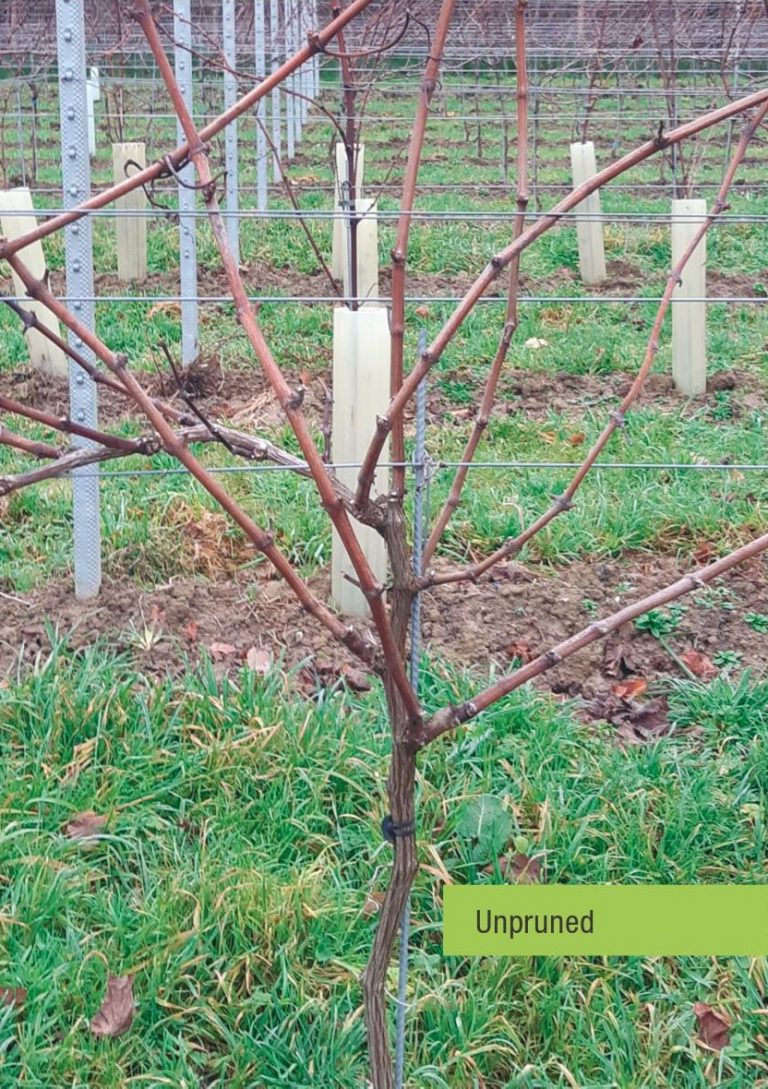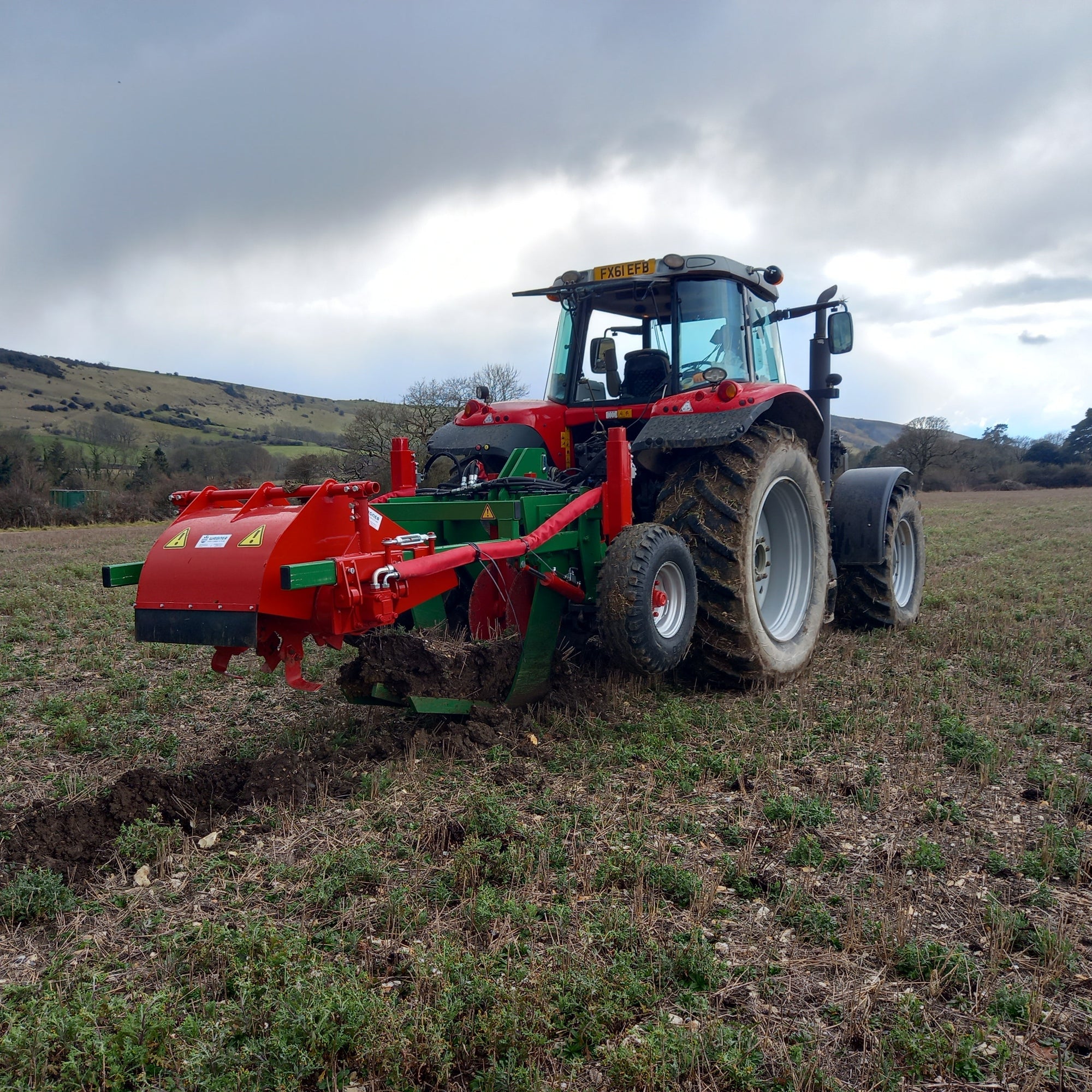
Frost damages the young green tissue on grapevines by either bursting the cell walls with expanding ice crystals or by compromising the cell structure through osmotic dehydration. Dormant buds, protected by their shells are far more resistant to damage than the tender tissue on growing shoots. Thus, delaying bud development in the buds we want to keep until the risk of frost is over, will give them the best possible chance of survival. Considering a vine’s apical dominance and finite pool of energy, the buds furthest from the crown will tend to burst first. In theory, pruning vines at the very last minute could do the trick but unfortunately this is not possible on a commercial scale. For this reason, two great techniques have been developed; double pruning or leaving sacrificial canes.
Double pruning can be very effective on spur pruned vines, especially because it is possible to mechanise the first pass. The principle is simple, cut all the shoots back to 30-45 cm above spur height at any point in winter and then follow as late as possible with your skilled pruning team to do the final spur and bud selections. By allowing the final pruning to be done late, this method is known to reduce the risk of Eutypa infections. A similar approach can be implemented on guyot pruned vines where canes and spurs are left longer than needed and trimmed back later. The awkward difference being that very long fruiting canes can be fiddly to tie down.
On guyot style vines it’s often simpler to leave sacrificial canes (AKA kicker canes). Traditionally used as a vigour reducing tactic, it’s ability to help delay burst on buds closer to the trunk/ crown can have the desired effect of frost damage mitigation too. Choose your primary canes, trim them up and tie them down as normal. You can leave them longer than needed as extra insurance too. Next, choose your spurs but leave these standing upright as extra long canes. No need to trim these up because they are, as the name suggests, sacrificial.
Once the risk of frost has passed, scout for damage and assess the extent. If you have managed to hold the buds back for long enough to resist being scorched, simply snip off the sacrificial canes back to standard spur length and dispose of the excess. Should you find that some buds have been burnt by the frost however, remember that you left more than double the required number of buds on the vine. At this point, cut the sacrificial canes back to the desired length, but still keeping enough healthy buds to maintain vine balance and produce a proud crop. Tying these extra canes down is easiest with a double foliage wire (Pendelbogen) system to avoid excessive wrapping around the wires which can knock off the crisp green shoots.
In many cases frost only settles in little pockets or along certain banks or hedgerows. Keep meticulous records of where you see frost damage and direct your efforts of double pruning or sacrificial canes to the known weak spots in your vineyard.




